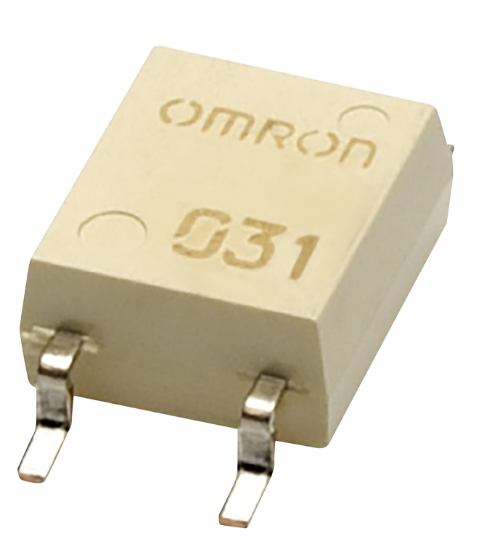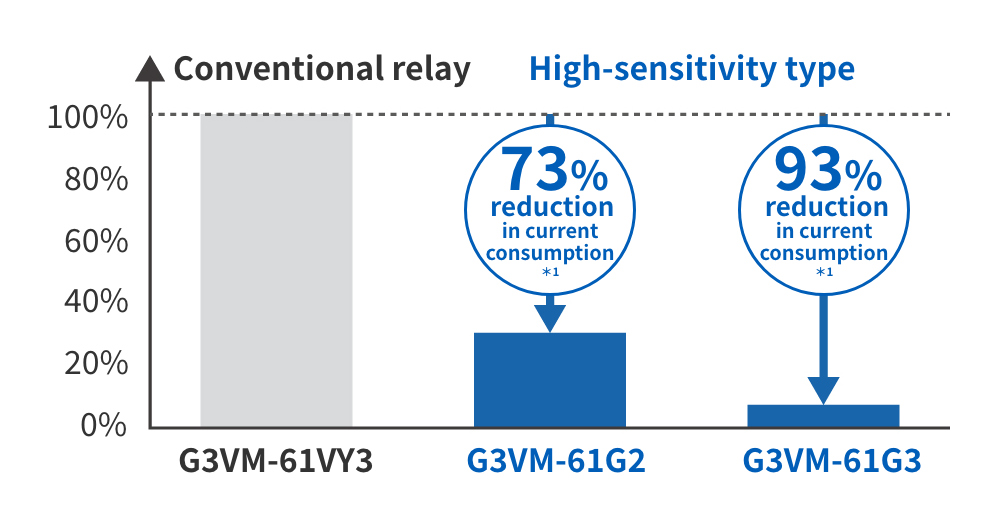Low power consumption drive
B: Contribution to decarbonization of customers' products
MOS FET relays (High-sensitivity type)
G3VM-61G2/61G3,
G3VM-201G1/201G2, G3VM-351G1,
G3VM-401G1, G3VM-601G1/601G,
G3VM-61VY4, G3VM-351VY1
Highly sensitive relays driven by lower power
consumption contributes to
energy-saving
design
of customer's
equipment

In order to address environmental issues, energy-saving design in various devices needs to be improved to reduce power consumption. One of the environmental measures is to reduce the power consumption of the component itself by selecting high-sensitivity type relays for the customer's equipment. High-sensitivity MOS FET relays can be driven with less current than our conventional relays, contributing to lower power consumption.
Difference in current consumption between conventional and high-sensitivity type relays
(calculated based on recommended operating conditions for each type)

*1. Comparison between conventional and high-sensitivity type relays
[The value DMS provides]
- Reduction of the drive current of MOS FET relays enables more energy-saving options for equipment.
- * When replacing from the same packaged product, there is no need to change the pattern design of the mounting section. * The input current must be redesigned (e.g., reviewing the limiting resistor value) depending on the operating conditions of the MOS FET relay you have selected.
Mechanism for driving MOS FET relays with lower current consumption
Unlike mechanical relays, MOS FET relays are structured so that the PDA element receives the luminous energy emitted by the LED element to generate electricity, which operates the output-side MOS FET. The light-emitting and light-receiving elements are the key components of the current consumption. OMRON's high-sensitivity type MOS FET relays can be driven with lower current consumption. This has become possible because they are designed to be energized even when the light-emitting energy of the LED element is small by increasing the sensitivity of the PDA element, which is the light-receiving element.
Internal structure of MOS FET relay Difference between conventional and high-sensitivity types

OMRON's MOS FET relays (high-sensitivity type) typical model lineup
 |
*1. Comparison between conventional and high-sensitivity type relays
-
The following high-sensitivity relays are available: G3VM-61G2/61G3, G3VM-201G1/201G2, G3VM-351G1, G3VM-401G1, G3VM-601G1/601G, G3VM-61VY4, G3VM-351VY1
Refer to "MOS FET relays high-sensitivity type list (by rated voltage)" for details.
